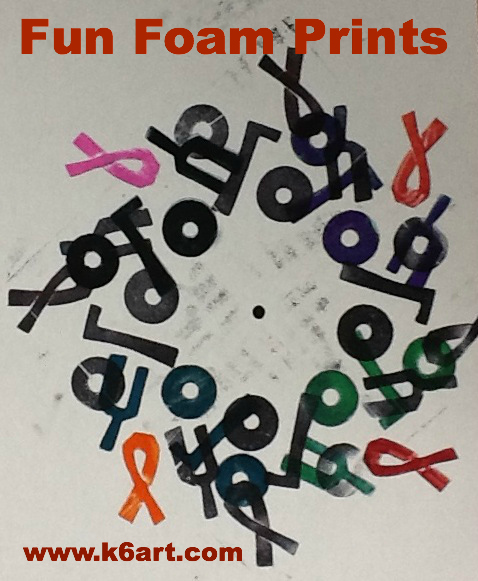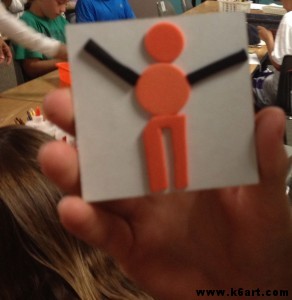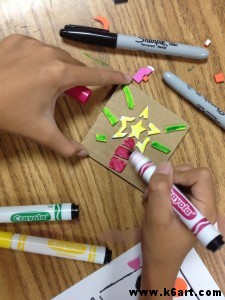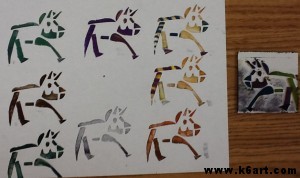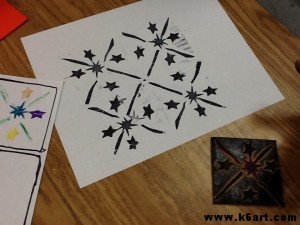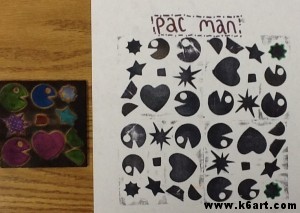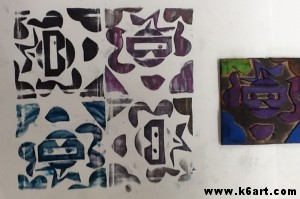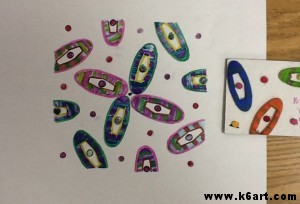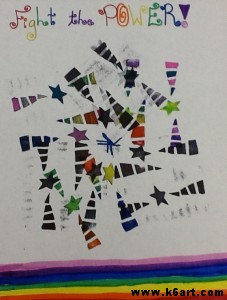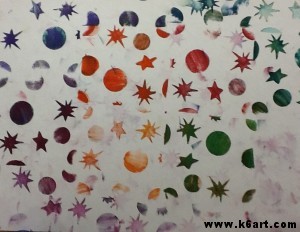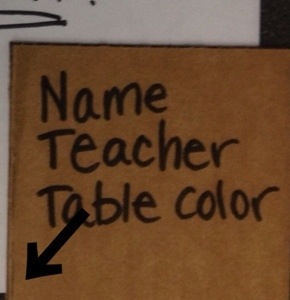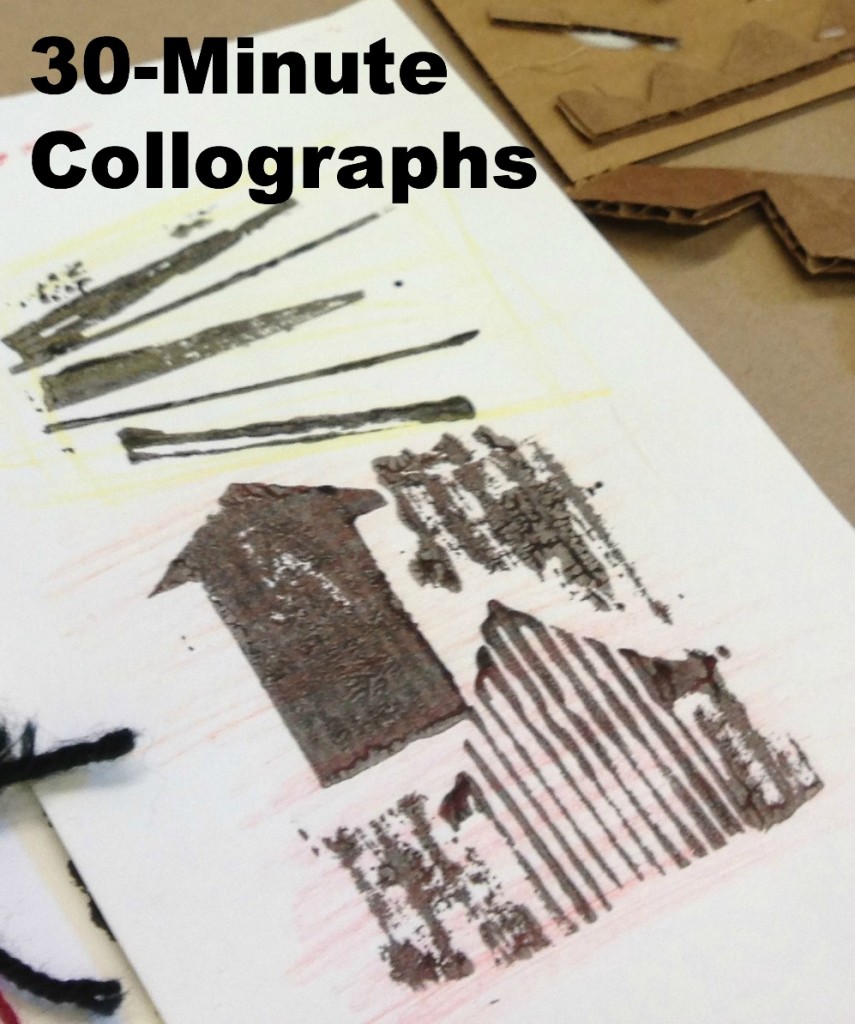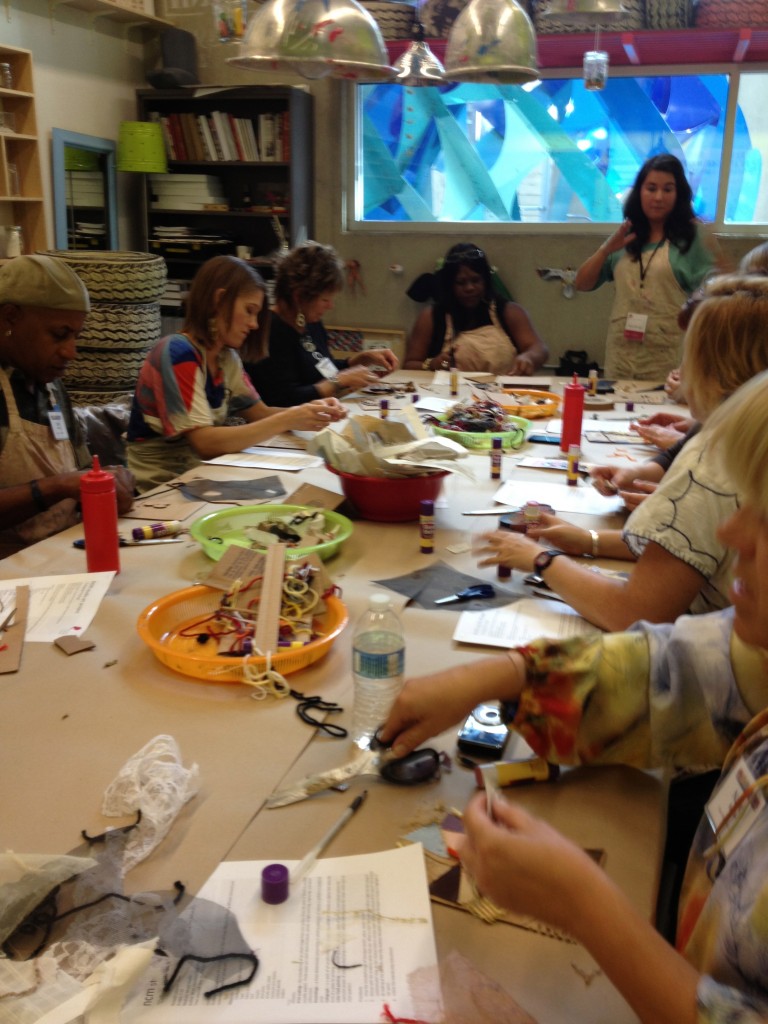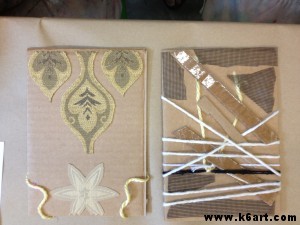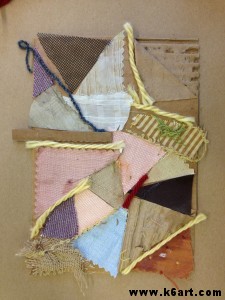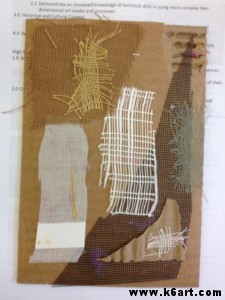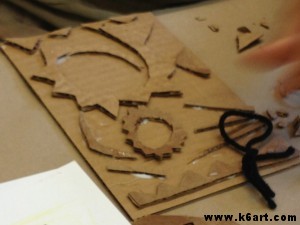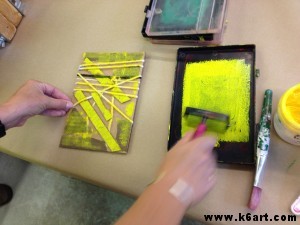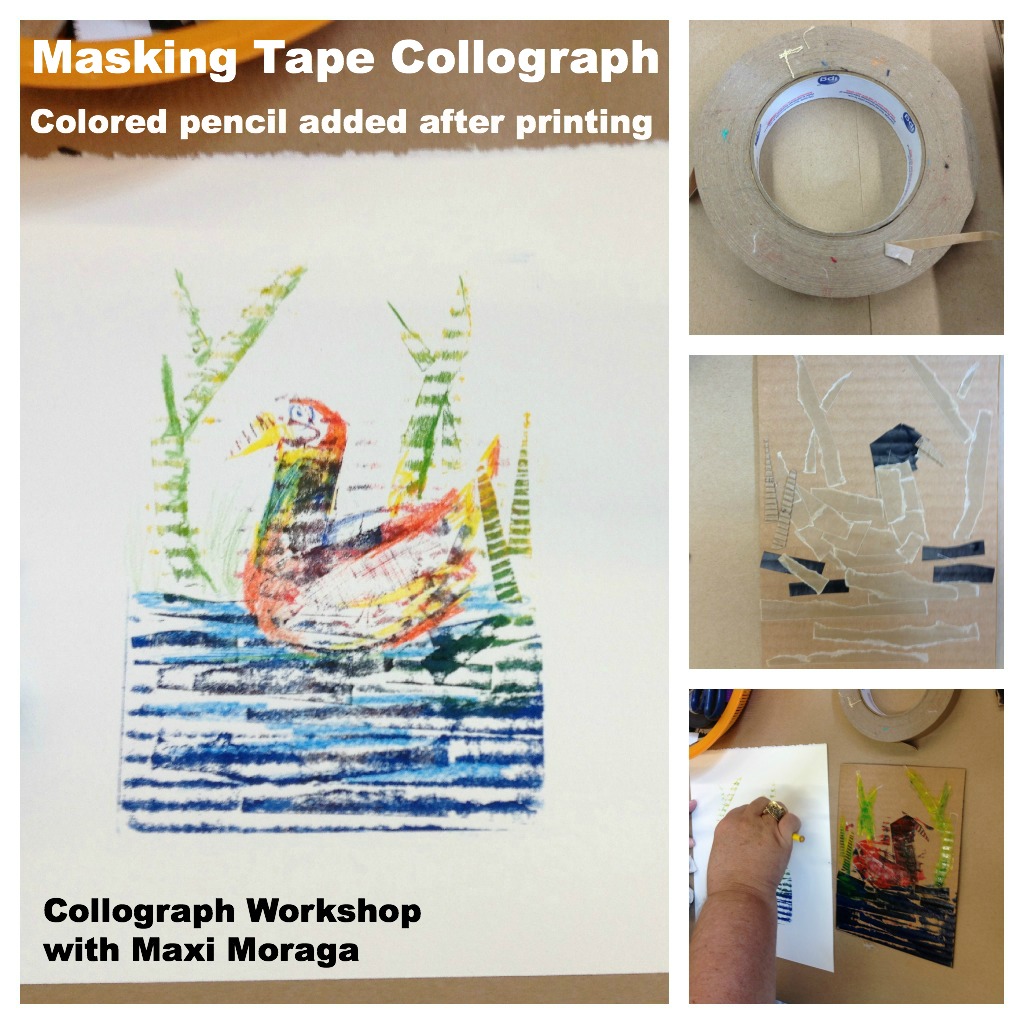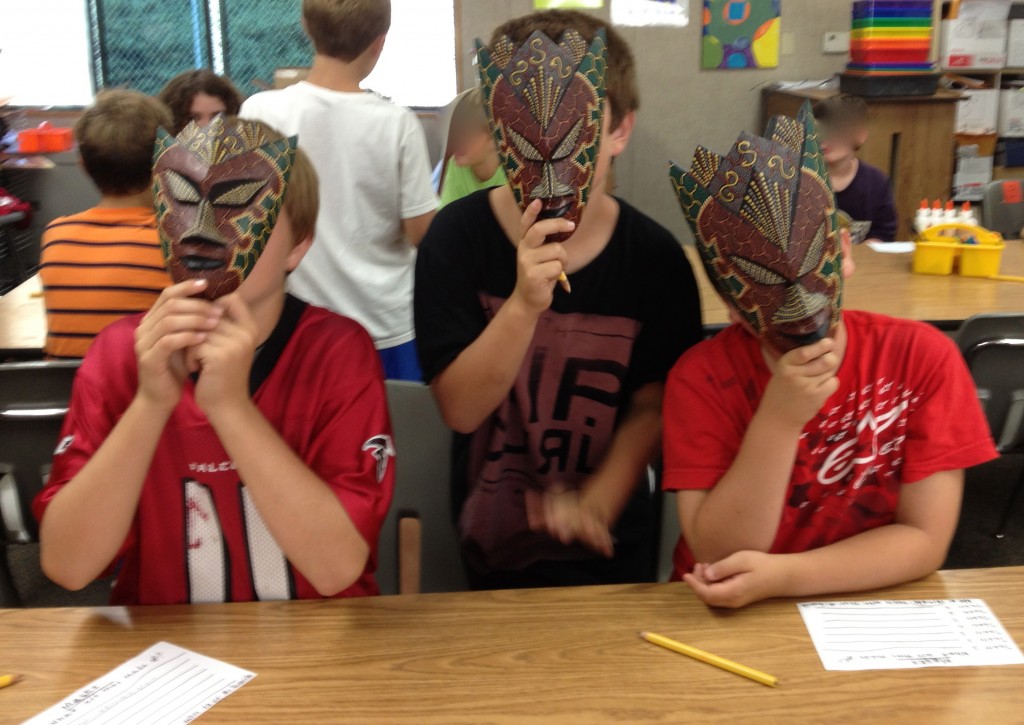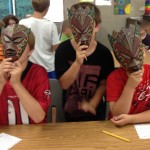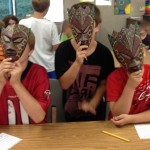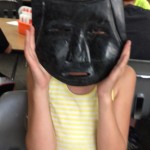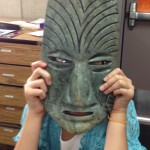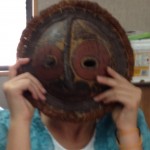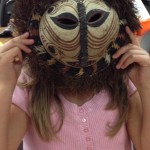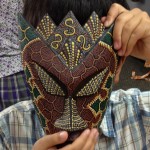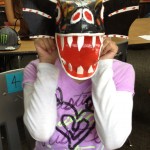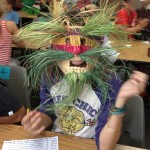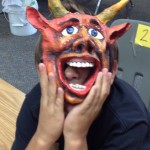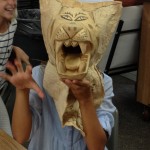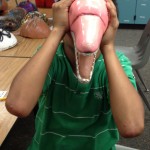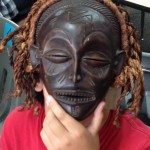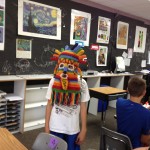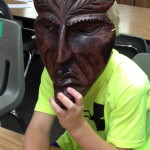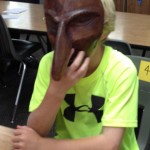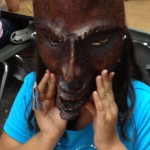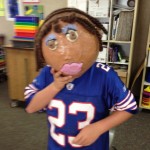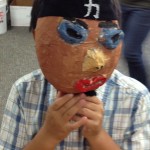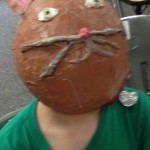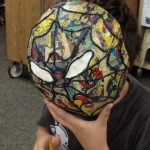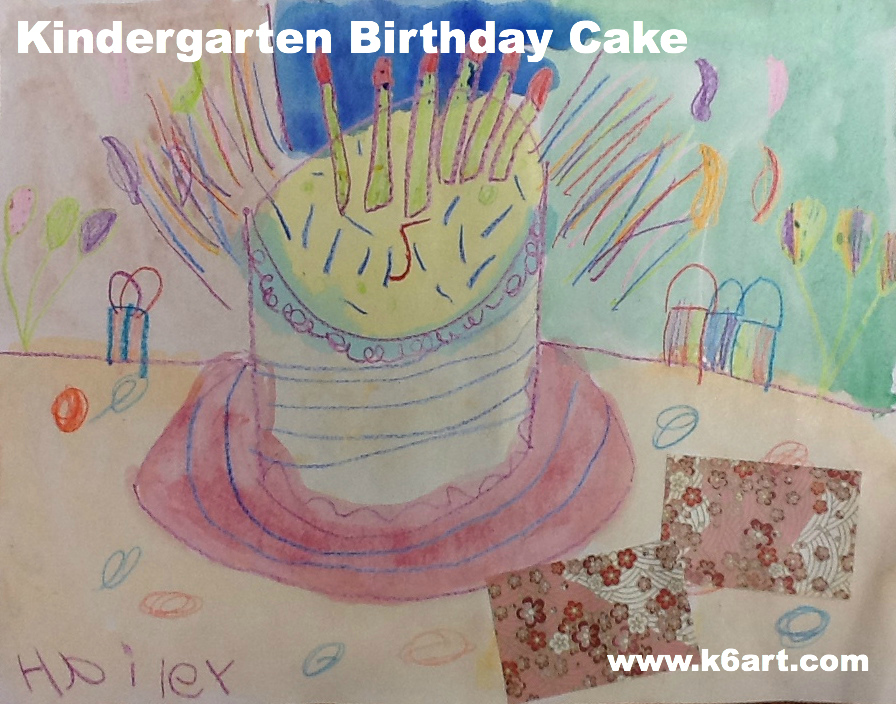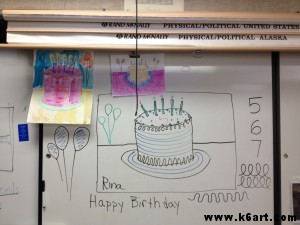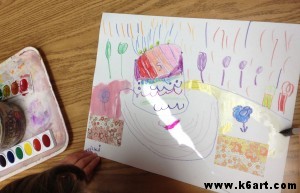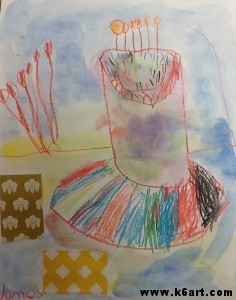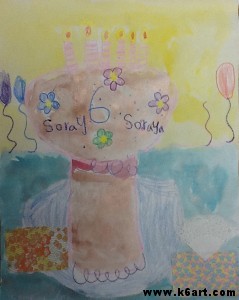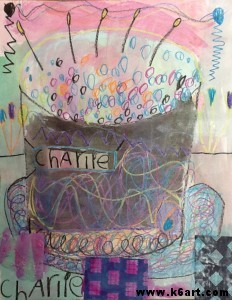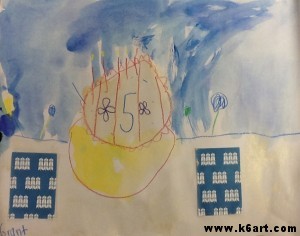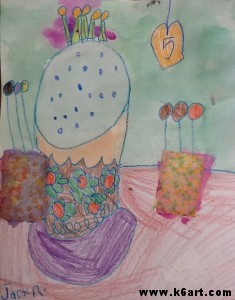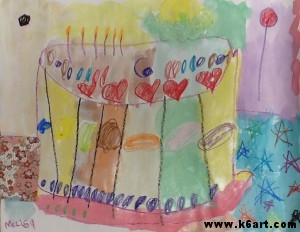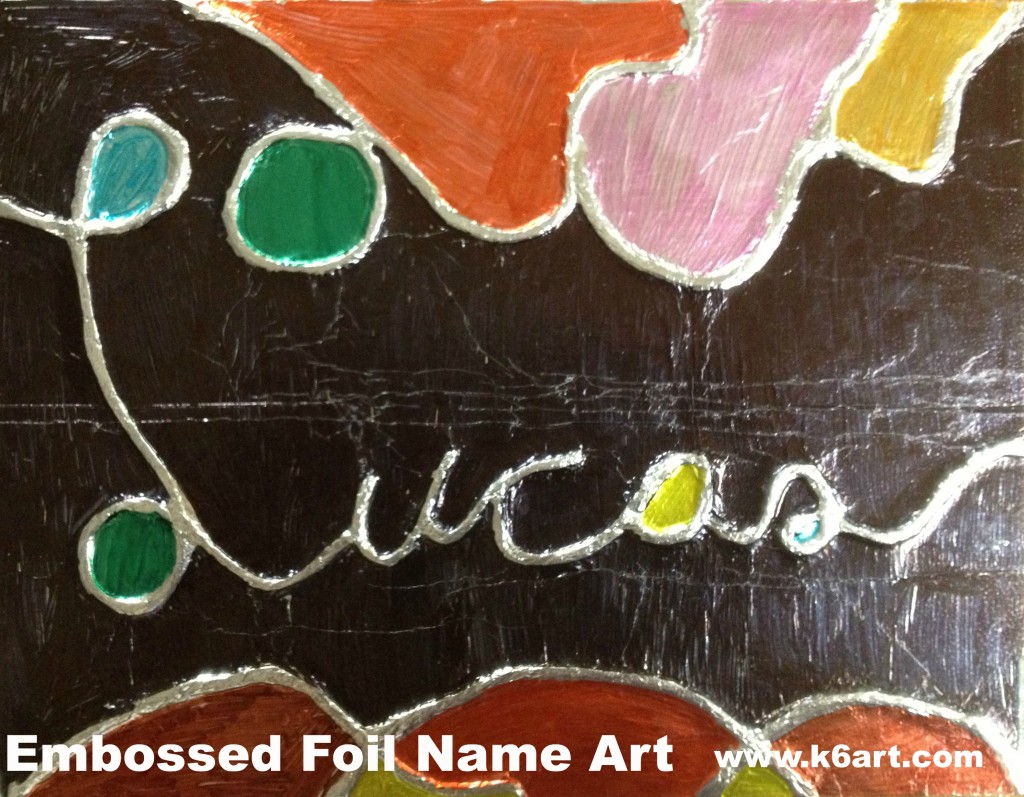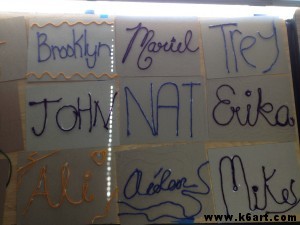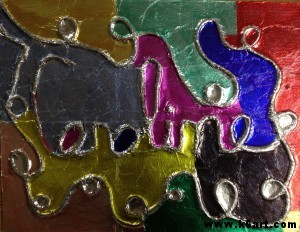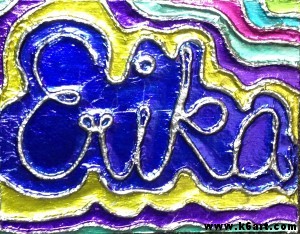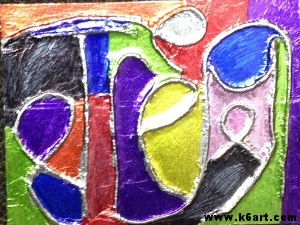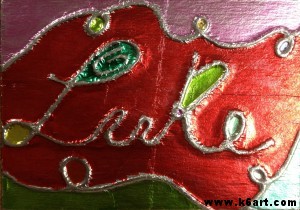Love printmaking? Try making your own stamps with self-adhesive fun foam stickers. It’s quick, easy, NEAT, inexpensive and 100% successful.
Materials:
- cardboard squares, 3″x3″
- self-adhesive foam stickers in various shapes such as these
- scissors
- hole punches
- water-based markers (we used Crayola)
- water-based stamp pads
- paper for printing (we used copy paper)
Design the stamp:
Students began by tracing their cardboard square three times on a sheet of copy paper. Then they arranged their foam pieces within the squares until they found a pleasing composition.
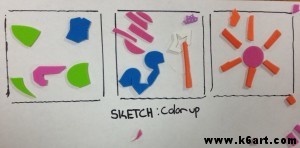
Students rearrange cut-up craft foam stickers until they find an arrangement they like. Don’t peel the stickers yet!
I had a random assortment of stickers on hand – letters, animals, stars, ovals….I encouraged the students to cut up/hole punch their stickers so that the stickers no longer resembled their original shapes. No letters or numbers allowed! Once they found a good arrangement, they peeled their stickers and stuck them on the cardboard squares.
Assignment 1: print with colored markers
Next students inked their stamps with Crayola markers and printed on a clean piece of paper.
Print! Then re-ink and print again. You go over the stamp with another color of ink for subsequent printings.
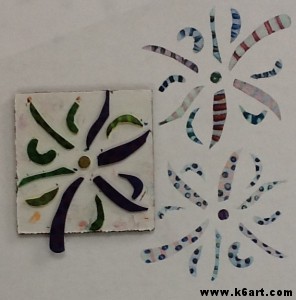
Inking plate with multiple colored markers allows students to make some beautiful color combinations.
Assignment 2: Radial design print
Place on dot in the center of a clean piece of paper. Flip stamp over to back and draw arrow on cardboard pointing to one corner.
Ink stamp with stamp pad. Print so arrow points to the center dot. Re-ink and print again, rotating stamp so arrow always points towards center dot.
So much fun! 100% of sixth graders had success with this project. I think third graders and older could succeed with this project.

